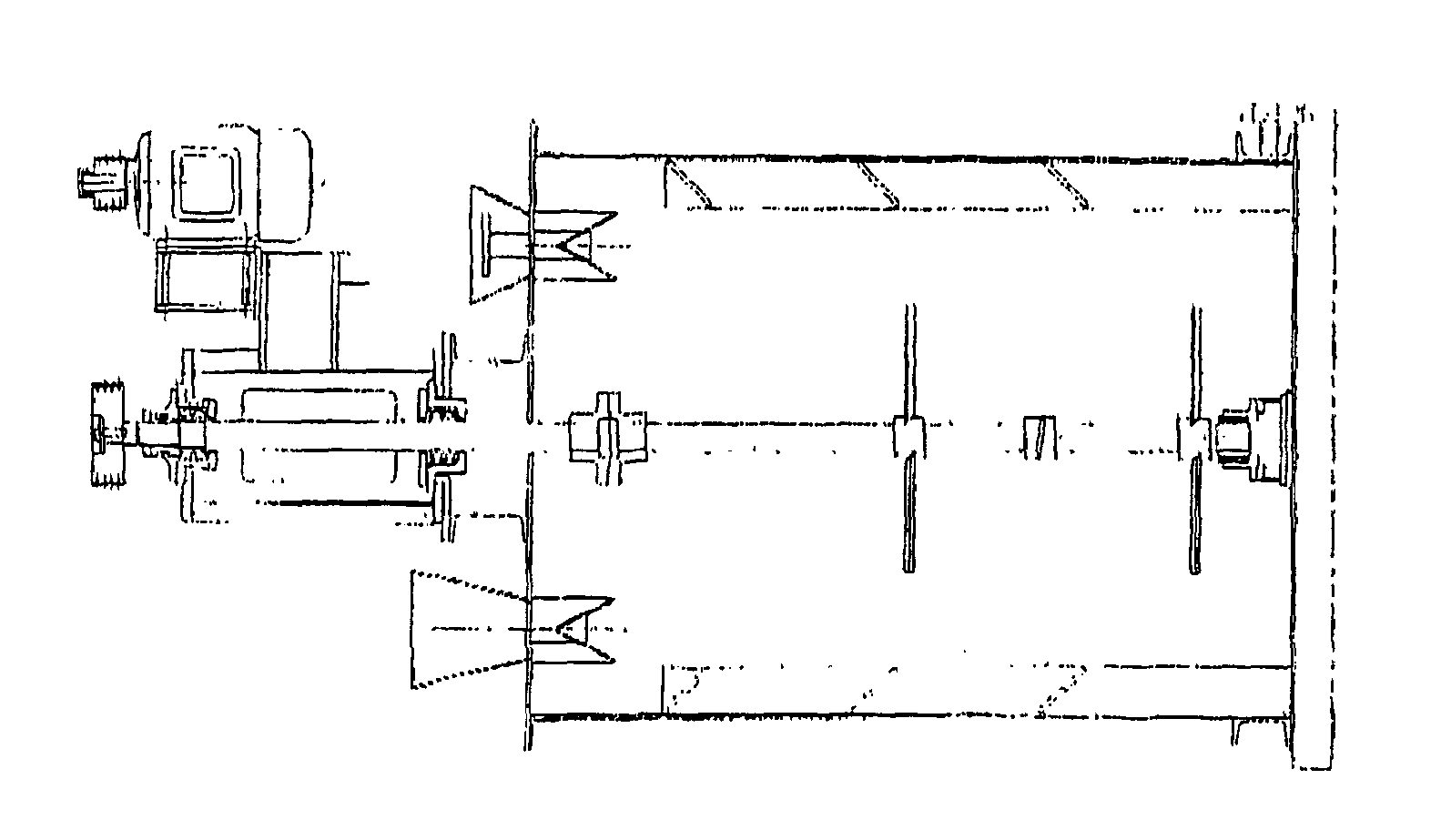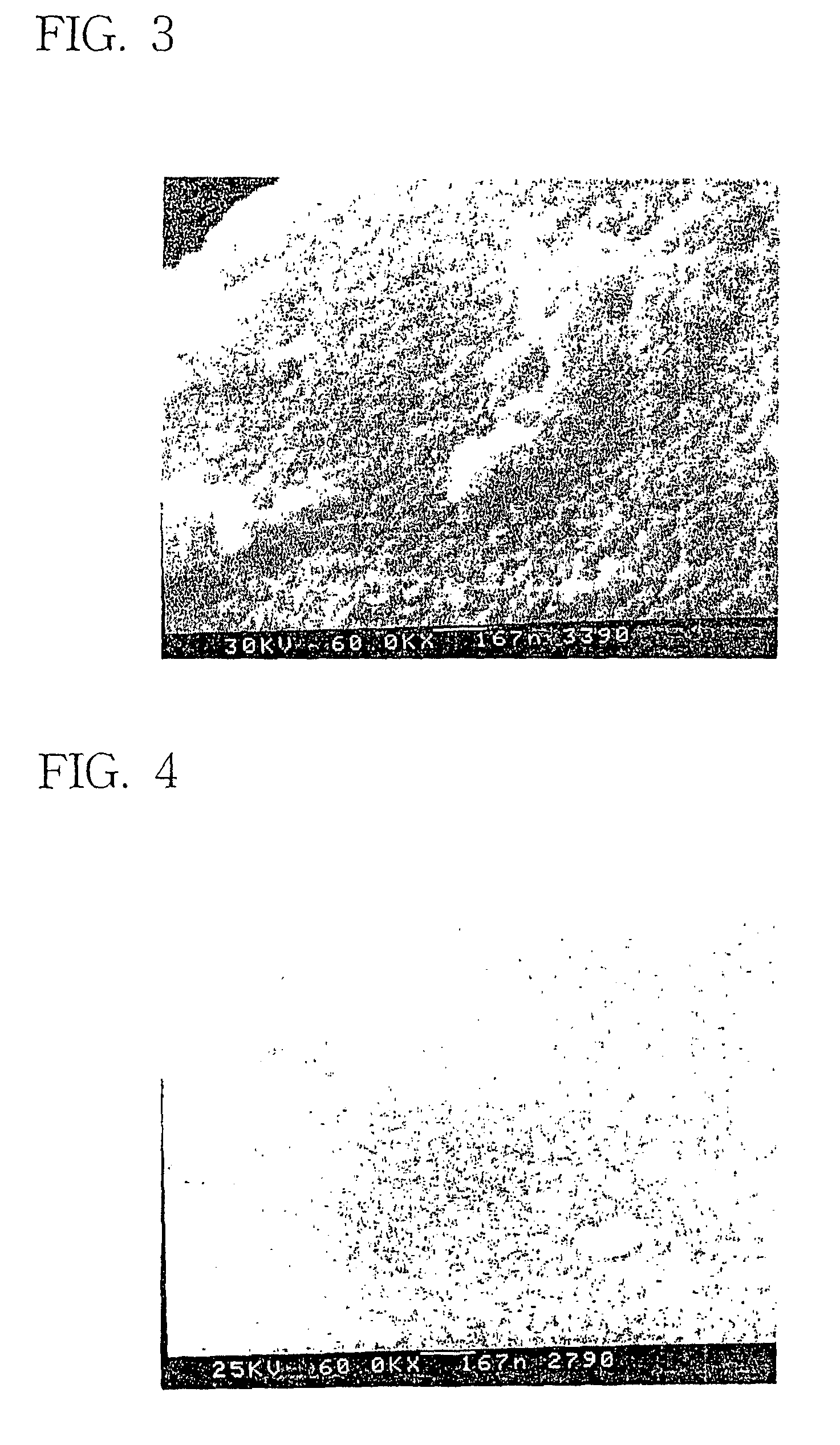Method for preparing a pearlescent pigment by coating metal oxides on the synthesized mica
a metal oxide and pearlescent pigment technology, applied in the direction of coatings, pigment treatment with non-polymer organic compounds, chemistry apparatus and processes, etc., can solve the problems of deterioration of luster or chroma, the level of luster and chroma required for pearlescent pigment cannot be achieved, and the final product is not uniform
- Summary
- Abstract
- Description
- Claims
- Application Information
AI Technical Summary
Benefits of technology
Problems solved by technology
Method used
Image
Examples
example 2
[0042] The synthesized mica used in Example 1 was ground in a water mixer and then separated to three portions as average sizes, 100 .mu.m, 150 .mu.m and 250 .mu.m of the synthesized mica particles. 100 g of the synthesized mica particles were added to and dispersed in 1 liter of the deionized water, and then raised to the temperature of 60 to 100.degree. C. Thereafter, 5% hydrochloric acid was added thereto to lower pH to 1 to 3, and refluxed for 10 minutes. 10 to 100 cc of 5% SnCl.sub.4.n(H.sub.2O) were added thereto and then refluxed for 10 minutes. 40% TiOCl.sub.2 aqueous solution was titrated and continued to maintain said pH with sodium hydroxide. Titration of TiOCl.sub.2 was stopped upon obtaining the desired color, refluxed for 10 minutes, and said solution was subjected to filtration, washing and drying, and then calcined in an electric furnace at the temperature of 700 to 1000.degree. C. As a result of X-ray diffraction analysis for the calcined pigment, it was confirmed t...
example 3
[0043] The same procedure as in Example 1 was carried out except that 0.0001 to 1% by weight of OS (sodium diisopropyl naphthalene sulfonate, manufactured by Cytec. Co., Ltd.) as an anionic surfactant was added before titrating 40% TiOCl.sub.2 aqueous solution to obtain the pearlescent pigment. It was confirmed that the synthesized mica particles coated with titanium dioxide layer were not agglomerated each other and uniformly dispersed in the obtained pigment, and that the titanium dioxide layer was smoothly and uniformly formed on the surface of the base material.
example 4
[0044] The same procedure as in Example 1 was carried out except that 0.0001 to 1% by weight of C-61 (alkylamine-guanidine polyoxyethanol, manufactured by Cytec. Co., Ltd.) as an anionic surfactant was added before titrating 40% TiOCl.sub.2 aqueous solution to obtain the pearlescent pigment. As is apparent in FIG. 2, it was confirmed that the synthesized mica particles coated with titanium dioxide layer were not agglomerated each other and uniformly dispersed in the obtained pigment, and that the titanium dioxide layer was smoothly and uniformly formed on the surface of the base material.
PUM
| Property | Measurement | Unit |
|---|---|---|
| Time | aaaaa | aaaaa |
| Percent by mass | aaaaa | aaaaa |
| Angular velocity | aaaaa | aaaaa |
Abstract
Description
Claims
Application Information
 Login to View More
Login to View More - R&D
- Intellectual Property
- Life Sciences
- Materials
- Tech Scout
- Unparalleled Data Quality
- Higher Quality Content
- 60% Fewer Hallucinations
Browse by: Latest US Patents, China's latest patents, Technical Efficacy Thesaurus, Application Domain, Technology Topic, Popular Technical Reports.
© 2025 PatSnap. All rights reserved.Legal|Privacy policy|Modern Slavery Act Transparency Statement|Sitemap|About US| Contact US: help@patsnap.com



